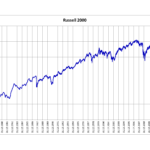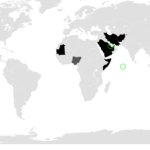Bitcoin’s price fluctuated significantly in recent weeks. It dropped below $64,000 after an attempt to go bullish that had it rise above $66k.
This decline in Bitcoin price, where the currency fell by more than 3% within 24 hours can be traced to several factors. These include a “long squeeze” in the perpetual-futures market, and the growing concern about possible interest rate increases from the Bank of Japan.
Japan’s choice of a new Prime Minister disrupts the markets
Bitcoin’s trend is bullish. This was especially true after a quick ascent by nearly 14 percent following the US Federal Reserve decision to reduce rates 50 basis points.
This bullish momentum, however, was suddenly disrupted by Shigeru Ishiba’s unexpected appointment as Japan’s next prime minister on September 30th, 2024. The selection reignited concerns about BOJ tightening its monetary policy.
In the past, BOJ interest rate increases have negatively affected risky assets such as cryptocurrencies.
Markets are jittery due to the uncertainty around Ishiba’s leadership, and Ishiba’s support for a return to more normalized monetary policies.
After Ishiba was selected, the Japanese yen increased, causing a decline of 5% in the Nikkei index. This further contributed to the downward pressure placed on Bitcoin (BTC), and other risky assets.
The Bitcoin drop can be linked not only to the fear of an increase in BoJ rates, but also to the “long squeeze” on the futures markets, which resulted into approximately $49 millions in liquidations.
According to data from CryptoQuant, the market for futures has become hotter than ever before. Open interest is now over $18,4 billion.
In the past, such conditions were precursors of significant price reductions.
The price of Bitcoin dropped from $66,000 at the time of press to $63,186.
Conditions of over-purchase
Bitcoin’s price decline coincides with the overbought market conditions.
Analysts noted that the perpetual funding rate for Bitcoin futures has reached levels similar to those prior to the significant selloffs of late July and early August.
Bitcoin is vulnerable to a market correction due to the over-extension of the market, especially in view of global equity markets’ cautious attitude.
Bitcoin Price Prediction amid Current Pullback
Some market analysts are still optimistic about Bitcoin’s future trajectory despite the current turmoil.
Matthew Hyland is a well-known analyst who expressed his confidence that Bitcoin will recover, even with short-term corrections in price.
He said that Bitcoin would have a new high and low if it could close above $65,000 for a full week, the first in six months. This signaled a possible trend change.
If#Bitcoin closes the weekly below $65k, we’ll have established higher highs and lower lows for the first 6+ month and establish a trend shift. Dips in the future would be an opportunity. The bias should change to bullish.
There is also hope that Bitcoin will regain its popularity as October approaches, which in the crypto-community, has been dubbed “Uptober”.
Bitcoin’s profit supply is also consistently higher than 80%. This is a strong indicator for a bull-cycle.
As we enter October, several important economic reports will be released and discussions about the central banks are likely to take place.
Investors are closely watching the upcoming US Manufacturing and Service Sector Reports, as well the much-anticipated September Jobs report which may have a significant impact on the Federal Reserve rate decision in November.
The markets currently lean towards a rate cut of 25 basis points, after the Fed made an unexpected cut of 50 basis points in September, which sparked the recent Bitcoin bull market.
As new information becomes available, this post Bitcoin Price Drops Below $64k Amid Fears of Bank of Japan Rate Hike may be updated.





